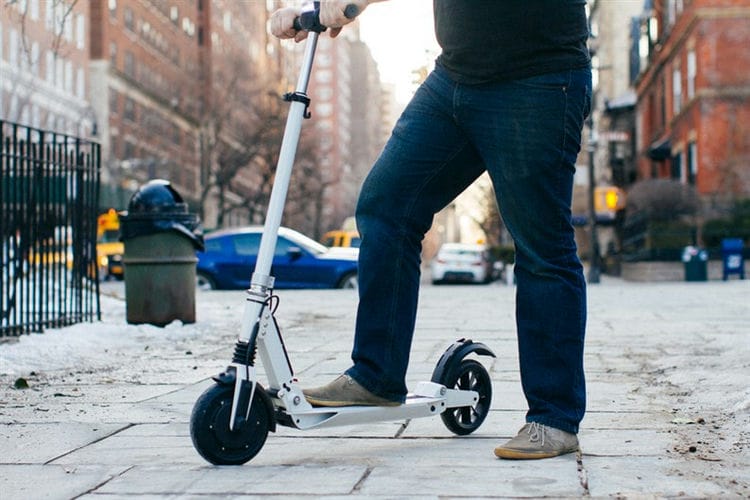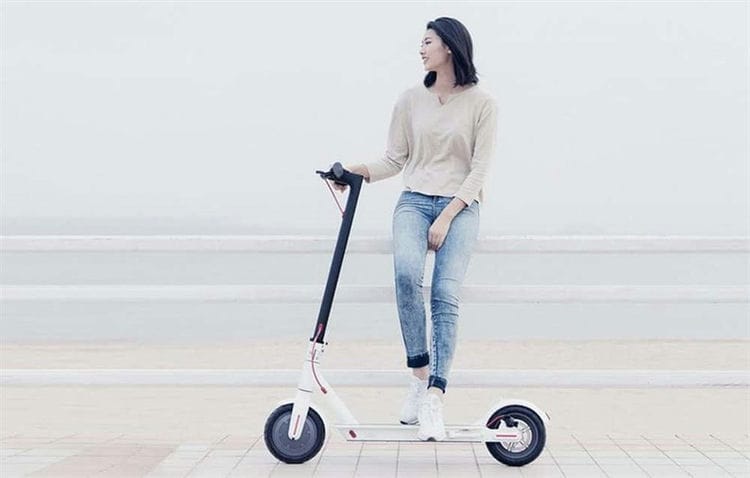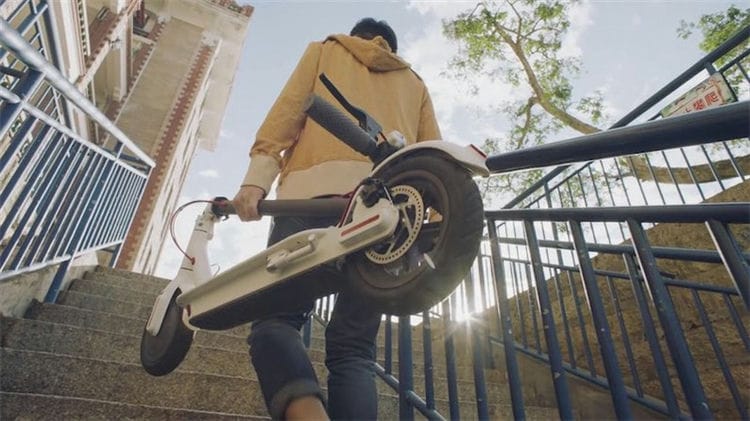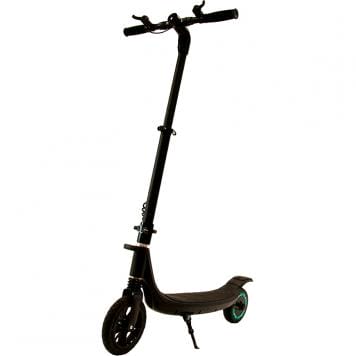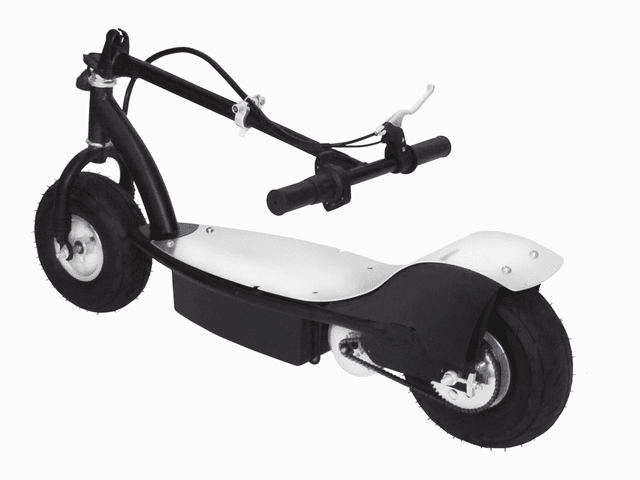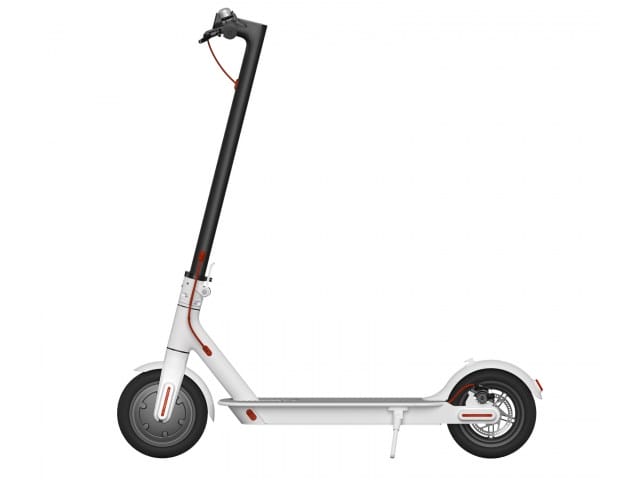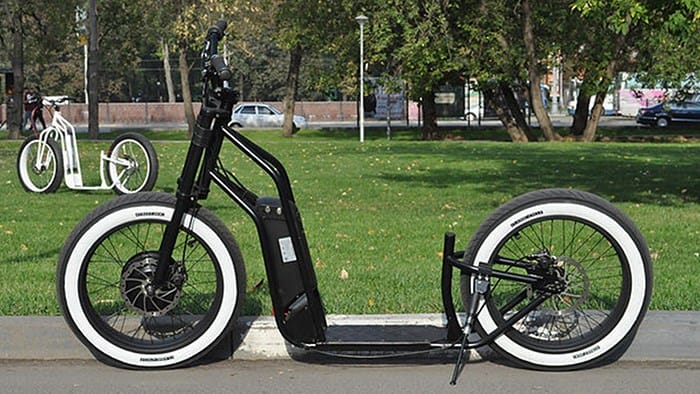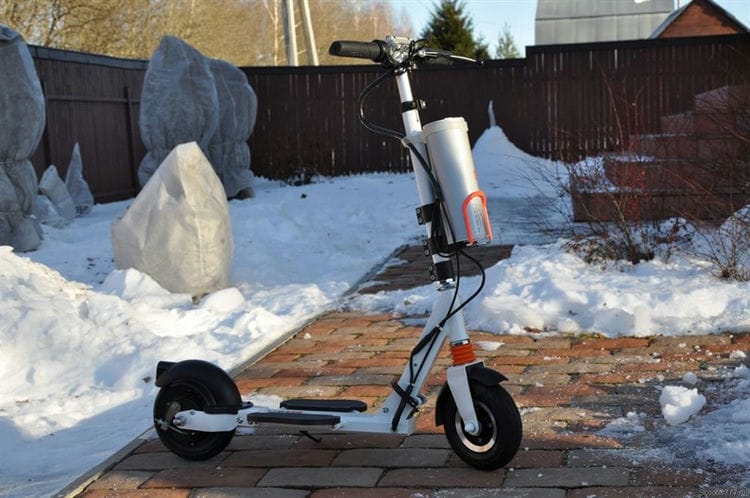How to carry an electric scooter on board an aircraft
What should be foreseen to make travel with a personal vehicle possible? Let’s start with the fact that it is almost impossible to give an unequivocal answer whether or not the transportation of an electric scooter in an airplane is allowed, since each air carrier dictates its own rules regarding the transportation of electric vehicles on lithium-ion (Li-Ion) batteries. Moreover, these requirements may differ significantly even within the same airline (depending on the directions of flights or the features of the safety requirements of certain countries).
What is the reason for this controversy regarding the carriage of electric scooters on board airliners? The companies have no complaints about the devices themselves. The only thing that may raise questions is the presence of lithium-ion batteries, which are sure to catch the attention of airport workers when checking your luggage.
Possible options for the conditions of carriage of an electric scooter on an airplane:
-
You will be freely allowed on the plane with a battery in your carry-on baggage (possibly in a special package).
-
Some airlines accept scooters in their original packaging (with a battery) as baggage.
-
In certain cases, only a low-power battery will be allowed on board (the norms are different).
-
It is possible to send the battery in a special protective container in the luggage compartment of your flight.
-
It also happens that such a special box is sent after you by a cargo plane.
-
Some airlines do not accept lithium salt batteries at all.
But in most cases, in order to freely fly on vacation with your electric scooter, you just need to remove the battery and take it with you in your carry-on luggage. You may be asked to pack it in a protective bag to prevent short circuits. It is also worth knowing the weight of the battery in advance and taking it into account when collecting luggage that you plan to take to the cabin (in order to avoid overweight). To do this, it is necessary to check with the carrier company in advance the permissible weight of baggage carried on board.
Driving in rainy and snowy weather: freedom or whim
Operating an electric scooter in rain and snow is not an idea for every rider. However, those who have a special love and awe for portable technology, prefer extreme driving, maneuverability and mobility, are clearly worried about how not to be separated from the technology all year round.
An e-bike or e-scooter with an electric motor is a great option for dry, warm weather. To operate a vehicle in rain and snow, you will have to work hard on additional equipment equipment. However, even with the most intense protection option, the electric scooter will not be able to demonstrate its full power and working potential.
Battery performance is directly dependent on the ambient temperature. The most popular batteries – lithium-ion – are designed for a range of up to -10 C (this is at best). Lead counterparts can withstand sudden temperature changes, but charging ends quickly.
First ride
You don’t need any special skills to start using the electric scooter. Any novice user will be able to get up and ride the scooter almost immediately.
To turn on the electric scooter, just press the corresponding button. Most often it is located on the steering wheel or next to the informative display. When the scooter turns on, press the special trigger on the steering wheel of the scooter and it will ride. Most often, the trigger is located on the right grip.
Preparatory stages
Before you go on a trip or buy equipment, you need to take care of a few things:
- evaluate the intended riding style, in accordance with it, choose the power, size and pattern of wheels. The budget is also worth considering;
- rider’s age and weight also directly affects the choice;
- equipment is selected in a similar way, if skiing is urban and unhurried, ordinary clothes are enough, for long trips it is worth getting better equipped. By the way, the helmet will not be superfluous in any case;
- already purchased equipment, you need to adjust, set the seat and steering wheel to a height corresponding to the height;
- it is worth studying the safety rules, as there are several controversial points for scooter drivers.
Weight height
This indicator should be taken into account when displaying transport components. Hands must be positioned so that there is no excess tension in the shoulder girdle, they must lie freely, without tension.
Some models are not equipped with steering column adjustments. In this case, you need to immediately choose the optimal design.
Equipment
The equipment includes:
- helmet;
- elbow pads;
- knee pads;
- gloves;
- back protection.
The helmet will allow you to safely fall at any speed, it is vital for scooter models capable of accelerating more than 30-40 km / h. For example, in the rental of electric scooters, we always ask our customers to wear the appropriate accessories and ammunition.
The knees and elbows, in this case, are the points of support, on which landing often occurs. To avoid bruises and bruises, it’s best to invest in a full set of equipment.
Back protection is a serious precaution, but is overkill for comparatively slow-moving models. However, if your scooter can accelerate over 40-50 km / h, then it can also be very useful. It is important to buy back protection if you ride on the road. In this form, a simple “turtle” or even overlays that are worn on the backpack from the side adjacent to the back are suitable.
Riding style
There are three main areas of skiing:
- urban;
- stunt;
- off-road.
The city is characterized by high-quality roads, a minimum of obstacles. At the same time, you periodically have to maneuver between pedestrians and small obstacles. Even a small and light scooter is suitable for this. For long journeys more than 20 km in one direction, a technique with a seat is useful, it is better to take medium wheels within 10-12 inches.
Tricks mean maximum lightness and maneuverability of the electric scooter. No seats, wheels can be as small as 8 inches on average. Be sure to purchase a complete set of crew.
According to the traffic rules of the Russian Federation, a person on a scooter is equated to a pedestrian, therefore driving on the carriageway is allowed only through crossings or specially designated places.
How to protect an electric scooter from rain: getting ready to the maximum
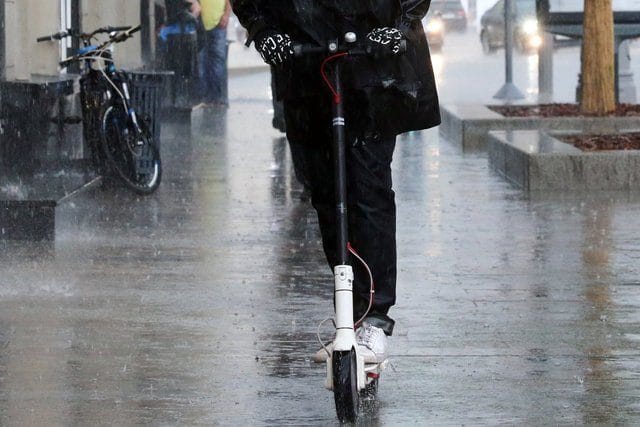 Electric vehicles can be operated in wet weather. Even in late autumn, when the rains are lingering, riders try not to part with their equipment. Despite the diverse range of electric scooters on the market, absolutely all devices are equipped with:
Electric vehicles can be operated in wet weather. Even in late autumn, when the rains are lingering, riders try not to part with their equipment. Despite the diverse range of electric scooters on the market, absolutely all devices are equipped with:
- electric motor (motor-wheel, as the most progressive and durable option);
- battery;
- controller;
- gas system;
- brake system (there are different modifications and options).
Only by protecting all the components and auxiliary components of an electric scooter or bicycle from accidental water ingress can you risk taking a trip in the rain. All of these elements are extremely sensitive to moisture. Water ingress will immediately have negative consequences. Most manufacturers try to protect the latest series of scooters from aggressive environmental influences.
How to check the suitability of electric vehicles for use.
Before each ride, you need to check your scooter for ride suitability. To do this, follow these steps:
-
make sure that the battery is charged, if necessary, charge it with a regular charge;
-
inspect wheel tires, make sure they are not damaged and inflated;
-
check the performance of the brakes;
-
inspect the transport, make sure that there are no deformations;
-
check that the bolts are securely in place, paying particular attention to the steering rod, handlebar and wheels.
Assembly
To assemble a ready-to-use scooter, you must follow the instructions:
- Remove the components from the packaging.
- Install the front wheel and secure it with a nut.
- Unfold the scooter frame by pressing the lever for folding and opening the steering column until it clicks.
- Secure the steering wheel with a special clamp supplied.
- Align the direction of the steering gear and secure with the centering bolts.
- Position the brake levers in optimal positions and secure.
- For seated models, align and secure the saddle in the most comfortable position using the cam and mounting bolts.
How to maintain speed
To maintain speed on an electric scooter, you do not need to additionally push off the surface with your feet. The engine will allow the electric scooter to accelerate without your help.
Novice users of an electric scooter are not recommended to accelerate to maximum speed – this is extremely traumatic. Also, during fast movement, you do not need to make sharp turns or brake sharply.
How to properly operate an electric scooter in rainy weather
Good modern transport can be used for walking in any weather, if done correctly. It is important not to completely submerge the wheel motor in water. The less sensitive transport components will come into contact with water, the better.
Otherwise, it may cause a short circuit. In order to increase the level of safety for the rider and the vehicle itself, we recommend treating the seams with silicone sealant. There are a number of rules and recommendations, following which you can operate an electric scooter well, even in rainy weather:
- The battery case, as the most sensitive and vulnerable element, should be properly sealed. If water accidentally gets on the battery, then the equipment should be delivered to a warm and dry room as soon as possible. The next step is to remove the cover from the battery and dry the battery compartment thoroughly.
- The controller cover at the point where the wires exit must also be carefully finished. High-grade waterproofing protects the housing from water ingress. Remember that the brake and throttle levers, switches, and the computer also do not like moisture. Treatment with a special water-repellent spray will also protect these important components of the electric scooter in wet weather.
- When purchasing a portable electric vehicle for active use, buy protective fenders and a mudguard for the rear wheel. Thus, you will protect your shoes and clothing from splashes. Some models are equipped with these accessories as standard. Otherwise, you can order additional equipment from the online store.
Safety in rainy weather
If you decide to ride in the rain, do not forget about safety. It is better if the scooter is driven by an adult. Leave sunny weather for kids and teens for fun on portable vehicles.
When it rains, slippery tiles and similar surfaces are a serious threat. There is always a risk of falling when suddenly turning or braking suddenly. Even an experienced rider should keep the speed low. Choose a proven route with good road surface and a minimum of puddles.
In the dark, use:
- reflective elements on the vehicle and the rider itself;
- headlamp with waterproof protection;
- highly sensitive brake lights;
- protective equipment;
- helmet on the head.
All these attributes should always be in an active rider, but it is in wet weather that they become vital.
How to ride to maximize battery life.
Battery life is usually around one to two hours and depends on many factors:
- battery power reserve (Wh), i.e. from capacity (Ah) and voltage (V);
- battery type – if you compare lithium and lead-acid versions with the same characteristics, then lithium will work longer without recharging;
- workmanship, i.e. from the manufacturer;
- average speed of movement;
- terrain – with hilly terrain and frequent uphill climbs, the time is reduced;
- driving style – sharp accelerations to maximum speed significantly reduce the battery life, sometimes by 2-3 times, while coasting increases the power reserve;
- load weights – the greater the weight of the person and the transported cargo, the shorter the battery life;
- battery life;
- using the regenerative braking mode;
- ambient temperature – in cold weather, the battery life is usually reduced.
To roughly determine the distance that a scooter can cover on a fully charged brand lithium battery (power reserve), you need to divide the energy reserve in Wh by 10.
Example. If the lithium battery has a capacity of 10 Ah, at a voltage of 48 V, then its energy reserve will be 10×48 = 480 Wh. Accordingly, the power reserve in this case will be equal to 480/10 = 48 km. Please note that this is an approximate value that is influenced by all of the above factors. The real distance can be 40 or 55 km. If you start driving with an incomplete charge, of course, the driving distance will be shorter.
Better to keep track of the operating time and power reserve on different terrain and at different speeds. This will help you to more accurately know the capabilities of your battery and predict the power reserve in a given situation. At first, it is better not to travel to extreme distances close to the distance calculated by the formula, it is better to always have a reserve of charge. Otherwise, the battery may run out ahead of time – you will have to reach a section of the path, pushing off with your foot or walking.
Do not forget that additional electrical appliances, such as headlights, side lights and others, also consume current when switched on, which naturally reduces the power reserve.
If the engine and the controller support the regenerative braking mode – very good, in this case the operating time can be increased by recharging the battery with the braking energy. In this mode, when braking, the engine gives off energy to charge the battery. Plus, brake pads wear less.
To increase the power reserve, we recommend using energy sparingly, coasting if possible and avoiding sudden acceleration and deceleration. When planning a route in advance, it is better to avoid roads with long climbs. You need to get under way and gain the first acceleration by pushing off with one foot from the surface of the ground, with the other standing on the deck, as on a regular scooter. At a speed of about 5 km / h, the engine starts automatically with both feet on the deck.
Advantages and Disadvantages of Electric Scooters
Modern technologies in the field of vehicles for urban movement offer users not only electric scooters, but also gyro scooters, unicycle and electric bicycles. Each tool has its own followers and has pros and cons.
The advantages of an electric scooter in comparison with other units are:
- Ease of Management;
- high speed, which on some models can even reach 50 km / h;
- a wide range of models, for example, with a seat, which reduces the load on the back and legs during long journeys;
- the presence of lighting allows you to travel even at night;
- saving time when moving around the city;
- compactness of folding models;
- light weight;
- charge stability.
The disadvantages of this vehicle can be considered:
- Difficulty driving over rough terrain
- the inability to make long trips without recharging;
- most models equipped with an electric motor do not provide for self-pushing off with their feet
when the charge level is low.
Also on the positive side is the ease of maintenance. You do not need to have any special education to know how to disassemble an electric scooter. The wheels are removed by unscrewing the retaining nuts, and the body is disassembled by unscrewing the standard screws with convenient handles.
Main characteristics of electrical models
Before deciding whether to buy an electric scooter, you need to decide on the purpose of its use (who will ride it, since there are differences between children’s and adult models) and thoroughly study the main characteristics of such
vehicles:
- Power. This is the main parameter that determines the speed of movement. Everything will depend on the battery and the motor. Adult models are usually equipped with 250W motors, which allows them to reach speeds of up to 25 km / h. Children’s models are less powerful and faster. It is also worth noting that scooters working on the principle of “motor-wheel” are equipped with motors of no more than 150 watts.
- Weight. Equally important is how much an electric scooter weighs. This indicator will also depend on the orientation of the model. Adult scooters can weigh up to 50 kg, and children scooters do not exceed 13 kg in this parameter. Standard weight starts at 8 kg.
- Lifting the load. Most of the models on the market have a carrying capacity of 70 kg, which makes it equally comfortable to use such a vehicle for both children and adults. There are more advanced designs, characterized by increased strength, allowing you to cope with more weight.
- Wheel diameter. The size of the wheel will affect the flotation and speed that the scooter will develop. But excessively large wheels do not have the best effect on maneuverability. For driving on asphalt roads, an indicator of 8 inches is considered optimal. If you plan to move more over rough terrain, then it is better to look at scooters with a wheel radius of 12 inches, with tires that have pneumatic deep tread.
- Battery capacity. A parameter that determines the power reserve of the device. The larger the capacity of the battery, the longer you can travel without recharging. For adult models of scooters, the minimum power is 10 A * h, which is enough to cover a distance of 35 km. It should be borne in mind here that larger batteries require longer charging times, which can be up to 12 hours.
- Dimensions. The purchase of an electric scooter leads to the problem of its storage. Therefore, it is best to pay attention to folding models that can be comfortably placed in a closet or on a balcony in winter. How to fold the electric scooter? Just like ordinary. There is a pivot arm near the steering column that lowers the fork to the deck or outsole, folding the device in half. Some manufacturers complete their models with a special bag for transportation.
- Additional parameters Depending on the cost of the vehicle, it may have additional options in the kit. The most common is a removable seat, which is very comfortable on long journeys. Also, the scooter can be equipped with a headlight, a trunk and a display that shows the riding parameters.
Why is it important to buy a quality electric scooter?
Is it possible to ride an electric scooter through puddles, ride in the rain? Yes, you can. But keep in mind that choosing unnamed models of dubious quality, you run the risk that the scooter’s equipment may fail in bad weather. Reliable, precipitation-resistant and equipped with a high degree of moisture protection, branded models of electric scooters will not cost much more, but they are guaranteed not to let you down in the rain.
Many people choose an electric scooter, electric skate and other innovative electric vehicles as an individual means of transportation for every day, noting the maneuverability and ease of movement along the city streets. Residents of megalopolises, tired of traffic jams, are happy to give preference to a trip away from the noisy gas-polluted traffic and crowds of people.
Structural elements
The model of this vehicle consists of the following main components: frame, sole or support platform for feet, two wheels, control handle, foot brake. In the electric version, the original parts of the scooter appear: an electric motor with a gearbox and a rechargeable battery, an on-board computer, a speed control handle. The torque from the motor is transmitted through the gearbox to the front and rear wheels. In this case, two basic types of drive are distinguished:
- The chain drive to the rear wheel is a traditional option that is used in large models of electric scooters. Driving this type of vehicle is easier, it has a good roll forward, it is possible to install a powerful motor.
- Gear motor on front or rear wheel. The motor-wheel has a high efficiency, effectively accelerates and decelerates, but due to the compact design, it is impossible to install a powerful motor. This solution is often found in compact devices.
The electric scooter runs on a lead or lithium battery, which is located at the bottom of the deck or on the steering column. The battery is the only source of energy, and the maximum mileage per charge depends on its capacity. On average, this figure is 30-50 kilometers. Modern lithium-ion batteries have a higher capacity and durability, they are not afraid of deep discharges. They are not as heavy as lead ones, but their cost is much higher.
Tires and suspension depend on the class of the scooter. In budget models, simple cast wheels are used. They are not afraid of punctures, but tough and uncomfortable. Advanced electric scooters are equipped with inflatable ones, and shock absorbers are used to increase the smoothness of the ride. In combination with a rigid frame, the seat turns such a scooter into a very convenient means of transportation over long distances.
Wheel size.
Wheels for different models can be very different: from miniature 3-4 inches to huge 14-16 inches. The larger the diameter, the better the softness, comfort and handling, but at the same time the weight and dimensions increase. Choose the diameter depending on the quality of the road surface you will be driving on.
For smooth roads, models with small 5-6 inch wheels are suitable, they are lighter in weight and compact in size, which affects the convenience during drifting into the apartment and during transportation.
For driving on low-quality roads, with cracks and small irregularities, it is better to pay attention to the 8-10 inch inflatable options.
The large, 12-inch inflatables are good for bumpy roads, but they add a decent amount of weight and size. 14, and even more so 16-inch options are rarely used, they are too large and heavy, it is inconvenient to bring them into the apartment of a multi-storey building and transport them. Do not forget that the heavy weight of the vehicle not only interferes with the transfer, but also increases the consumption of battery power.
Weight.
Another important parameter that is sometimes overlooked. The weight of the scooter can be from 5 kg to 40 kg. By weight, the models are divided into:
- very light – 5-7.9 kg;
- lungs – 8-11.9 kg;
- medium – 12 to 15.9 kg;
- heavy – 16 to 20 kg;
- very heavy – 20 kg or more.
The most popular are light and medium modifications, since 8-16 kg can lift almost anything, and their characteristics are excellent for most cases.
Dimensions.
Most of the models have small dimensions, which affects the convenience of carrying, transporting and storing. We recommend choosing the folding options – they are even more compact when folded.
The degree of protection of electrical equipment from moisture.
This parameter is denoted by IPXX, where XX are numbers. It is indicated in the product specifications. For example, IP65 or IP54. Moisture protection is the second number, it should be:
- at least 4 – for light rain without strong wind;
- at least 5 – for a rainstorm in a strong wind;
- at least 7 – for short-term immersion in water;
- not less than 8 – for prolonged immersion in water (complete tightness).
Thus, IP65 or IP55 degree of protection is sufficient for traveling in a rainstorm. If the battery is located in the deck, then driving through deep puddles is impossible, unless, of course, the degree of protection of the battery compartment is not IP68 or at least IP67, which is rare. Filling and shorting the battery will cause serious problems, it will fail. If the battery is located higher, for example, in the steering column, then you can safely drive through puddles with IP65.
If the degree of protection of the electrical equipment of your model is IP54, then you cannot ride in a downpour, you can only in a light rain. If it is even less, for example IP43, then the model is not designed for rain at all.
Battery charging rules
Before starting to use, you must make sure that the battery is fully charged. To replenish the tank, follow the instructions:
- Connect the charger to the scooter through the peripheral input on the body.
- Connect the charging module to a 220 V mains supply.
- The notification about the beginning of the process is displayed by means of the indicator on the memory.
- After waiting for the LED to change color, disconnect the charging from the outlet, and then from the scooter. Not the other way around.
The recharging time can vary from 1.5 to 7 hours, depending on the battery capacity and the power of the device.
Features of use
The battery will last longer if you follow some care rules:
- do not charge the battery for more than a day in a row;
- do not allow the complete discharge of the battery;
- store the battery at temperatures from +5 to +25 degrees and relative humidity of 70%;
- prevent damage to the battery case.
Where to learn how to operate an electric scooter
With the slightest experience of riding a simple (regular) scooter, it is easier to “switch” to an electric model. Management skills come quickly enough.
The first lesson should take place on a flat surface. It is desirable that there are no mechanical obstacles at all. The best solution would be to use empty parking lots.
Experienced riders know how to operate an electric scooter well. They don’t like to ride on narrow paths in city parks. You cannot perform complex shapes and effectively unfold there. However, the novice rider is 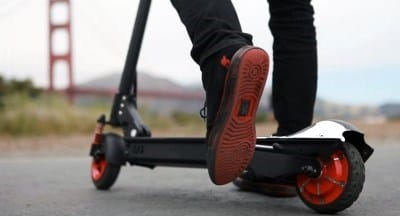 not required to be able to “turn the bends”. Therefore, it is convenient to study on the tracks.
not required to be able to “turn the bends”. Therefore, it is convenient to study on the tracks.
In addition, the park and garden pedestrian areas have a clear geometric shape. This unwittingly helps during training, as the rider intuitively tries to drive the electric scooter parallel to the edges of the track. This makes it easier to meet the “wagging as little as possible” requirement and to keep the body straight.
Placing the feet on the platform causes some difficulty. Intuitively, the novice rider tries to put them side by side. This cannot be done. Feet should be located one in front of the other. Once the muscle memory remembers this position, it becomes easier to control the parallel and oncoming movement.
So, the teaching rules are the same for children and adults.
The student must adhere to the following algorithm of actions:
- Place your hands on the handlebar.
- Put one foot on the platform.
- Touch the ground with the other foot.
- Activate the power button.
- Push off with the other foot. When picking up the starting speed, put both feet on the platform.
- Do some trial laps or ride back and forth.
- Further acceleration can begin when the body regains balance.
When you turn the steering wheel to the right or left, the vehicle changes direction. Correct control and braking of an electric scooter presupposes the ability not only to accelerate, but also to stop competently. According to the instructions, stopping is carried out using the brake lever. It is compressed and held in this position until the 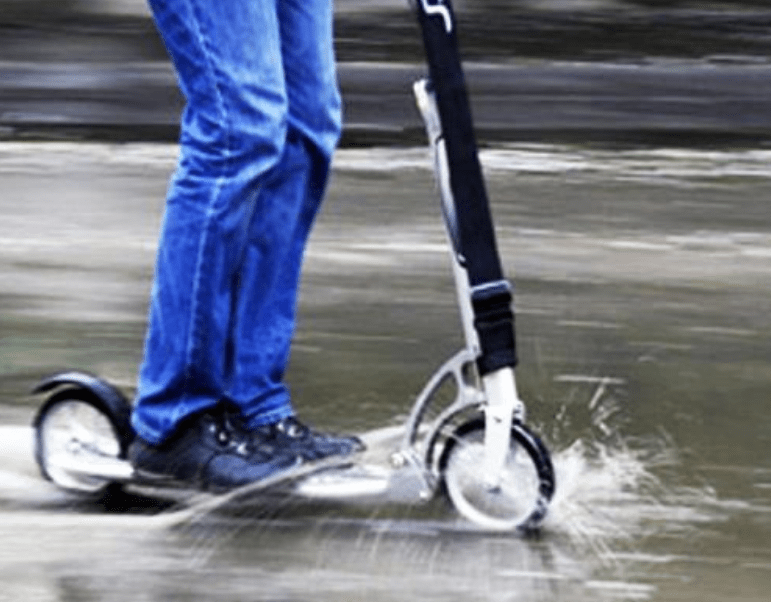 electric scooter stops.
electric scooter stops.
The speed can be released almost instantly by applying great mechanical force to the lever. However, this is not recommended. An emergency stop is only practiced when unforeseen complications arise.
Service rules
The main mechanisms of the electric scooter are set up during pre-sale preparation by the manufacturer. Sometimes there may be a need for self-debugging of a unit that has lost its original properties during operation.
Setting up the brake system
The scooter’s brakes are fine-tuned during production. To make additional adjustments to the system, you should be guided by the table:
| Rear brakes | Front brakes | |
| Tight move | Turn the tensioner screw on the right arm counterclockwise until the wheel can turn freely. | Adjust the screw on the left brake lever against the movement of the clock hand until an easy wheel travel is achieved. |
| Weak move | Turn the adjusting screw until the wheel turns with a light load. | Turn the setting in the opposite direction to the movement of the watch hand until a slight friction effect occurs. |
Main unit adjustment
The factory setting gradually gets lost when driving on uneven surfaces and over time. To independently adjust the knot, you need to take several steps according to the regulations:
- turn the steering rack to the right side, until it stops;
- using an adjustable wrench of a suitable size, tighten the bearing fixing bolt.
It is necessary to tighten the retainer with a slight effort: until it stops + another half turn of the key. Small preloads, like strong preloads, have a detrimental effect on bearing integrity.
Terms of use
Provisions on storage and use features:
- The scooter should only be used in certain areas.
- It is forbidden to use the device for other purposes.
- Do not turn on the electric scooter when a malfunction is detected. You need to contact the service center.
- It is prohibited to ride a vehicle without shoes with rubber soles.
- Avoid driving in rain to avoid liquid entering the engine compartment, which could cause a short circuit.
- It is recommended to fully charge the battery before each use.
- After riding, it is necessary to ensure that the battery is charged – this will help preserve the properties of the battery during the storage period.
- Before each ride, be sure to check the brake system.
- Monitor tire pressure regularly.
- Prevent cases of storing the scooter in direct sunlight.
- Make sure that the temperature of the device does not rise above 50 degrees, as this may damage the power distribution system.
- Do not leave the electric scooter in places with high humidity for a long time.
An electric vehicle must be stored in a dry place at an ambient temperature of +5 to +25 degrees Celsius and a hygrometer reading no higher than 70%.
Precautions
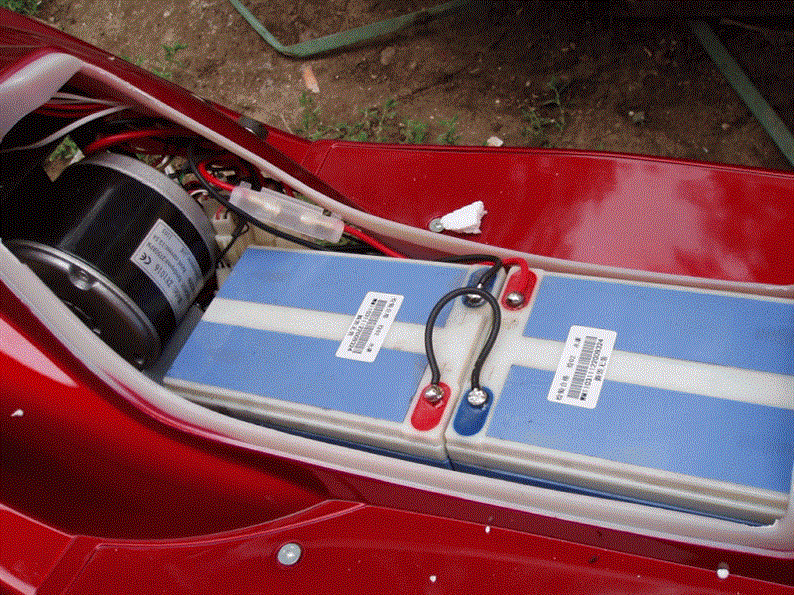
Like any other vehicle, an electric scooter requires respect. This is especially true for children. Therefore, it is worth knowing the safety rules:
- you can use the device only after carefully studying the operating instructions;
- the first trips are carried out at a minimum speed in order to feel the maneuverability of the vehicle;
- before the trip, the brake system is necessarily studied and tested;
- children and adults are advised to wear personal protective equipment – helmet, gloves, knee pads and elbow pads;
- the quality of the roads and the weight of the rider affect the maximum speed, therefore, you cannot squeeze more from the device than indicated in the technical passport;
- the electric scooter is used only in dry weather and on roads with a flat surface;
- in the rains, this tool remains at home, since electric traction is the basis for movement;
- children can ride only under the supervision of adults;
- you cannot use a scooter to drive onto the carriageway, only on the designated roads;
- the rider is a participant in traffic, which means he must comply with all traffic rules;
- to reliably maintain balance on the device, operation is carried out only in sports shoes;
- before each trip, not only the battery charge is checked, but also the serviceability of the brake system;
- one electric scooter – one rider;
- clothing for travel is selected so that no element of it (lace, ribbon, etc.) gets into the rotating elements;
- while riding, the arms and legs should be without separation in their proper places – the handlebar and sole;
- the room where the battery will be stored must be dry and not hot;
- if the electric scooter fell or had a strong mechanical impact, then you need to show it to the master, but in no case continue to use the device;
- a damaged battery must not be installed, it needs to be replaced;
- It is strictly forbidden to use the scooter in an alcoholic or narcotic state.
An electric scooter is not suitable for extreme driving. Here you need to choose something more powerful and persistent.
It is important to remember that riding an electric scooter and not observing safety precautions in operation is a threat to yourself and others.
Electric scooter for winter riding: the experience of active riders
Operation of an electric scooter in winter, as well as in rainy weather, is associated with certain difficulties. However, all difficulties can be solved with a competent approach. When going for a ride on an electric scooter, you should always remember about additional means of protection from the weather. In winter, protective attributes are used to protect the battery from the cold, as well as to protect the display and exposed connectors from aggressive environments.
Most modifications of modern electric vehicles are allowed to operate at air temperatures up to minus 10˚С. Even in a slight frost, the battery will lose discharge faster. In addition, there is always a risk of premature battery wear.
Special kits are available for riders to insulate sensitive electronics. They are not that expensive, but will help protect expensive electric vehicle parts. Only after installing such elements, you can go outside in frosty weather.
A number of other points to pay attention to in winter:
- Modifications of electric scooters, equipped with inflatable wheels, should be “changed” in advance. Experts advise taking a closer look at polyurethane analogues. They are affordable and much more profitable to operate in winter.
- Experienced riders are always on the lookout for condensation. Excess moisture appears and accumulates during significant temperature fluctuations. For example, when a rider enters a warm room from the street, bringing equipment with you.
Many users of portable electric vehicles in winter face another specific problem. Roads and sidewalks are generously sprinkled with chemicals. Getting on the surface of technology, these substances accelerate corrosion processes. There is only one way out: every half hour you need to carefully remove street dirt from the surface of your device.
Malfunctions
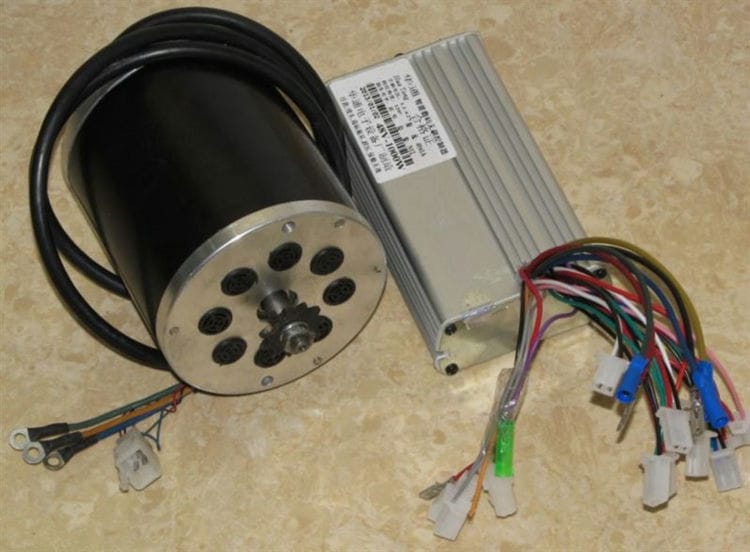
Any thing tends to break. The electric scooter is no exception. But some malfunctions can be solved on their own, while in other cases the help of professionals will be required. It is important at the time of purchase to ask the seller about the availability of service centers in the city, where they help to troubleshoot.
Frequent breakdowns are associated with batteries, chargers and electronics. In the first two cases, the problem is solved by purchasing new items. But it is better to entrust their installation to professionals. Repair work is as follows:
- welding of individual metal elements;
- replacement of old bearings and chains with new ones;
- checking hydraulics, and, if necessary, repairing and pumping up;
- change of individual elements;
- full or partial replacement of a motor or drive.
But it is worth saying that for a high-quality repair, it is better to take the electric scooter to a service center, where the master will diagnose the equipment and identify the exact malfunctions.
Only in this case, a full-fledged restoration of the scooter is guaranteed, because not all types of work can be carried out independently.
Conclusion
These are the basic conditions that ensure the serviceability of the electric scooter for many years and the pleasure of using it. If the standard moisture protection of the device leaves much to be desired, then its upgrade can be done using a sealant, water-repellent sprays and insulating tape, spending little money.
Sources used and useful links on the topic: https://RuSamokat.ru/statii/article_post/mozhno-li-perevozit-elektrosamokat-v-samolyote/ https://El-samokats.ru/mozhno-li-ezdit-na- elektrosamokate-zimoj-ili-v-dozhd https://carcam.ru/articles/Electrosamokat_kak_ezdit/ https://kolesomono.ru/interesnoe/kak-ezdid-na-electrosamokate https://ridsport.ru/elektrosamokaty/48- elektricheskij-samokat-kak-pravilno-ezdit https://gadget-bit.ru/kak-rabotaet-jelektrosamokat-instrukcija/ https://nakolesah.guru/chto-takoe-elektrosamokat/ https://formand.ru/articles / mozhno-li-katatsja-na-elektrosamokate-v-dozhd / https://sport-snaryazhenie.ru/samokaty/341-kak-rabotaet-elektrosamokat-printsip-raboty https://ridsport.ru/elektrosamokaty/72-printsip-raboty-elektrosamokata-osnovnye-kharakteristiki https://El-samokats.ru/kak-katatsya-na-elektrosamokate https://vash.market/sport-i- otdyh / samokaty / vybiraem-elektrosamokat.html https://electrotransport.su/ekspluatatsiya-elektrosamokata-v-dozhd/

